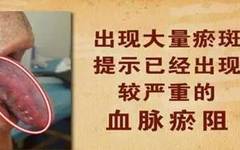The diagnosis of color in Traditional Chinese Medicine (TCM) is profound and complex, with many nuances that even seasoned practitioners may find challenging to master. However, there is a relatively straightforward principle in color diagnosis that is closely related to the general public: the color of the tongue.
In TCM, it is believed that the heart is reflected in the tongue, meaning that the health of the heart is first manifested on the tongue.
1. Stasis Spots on the Tongue: Blood Stasis
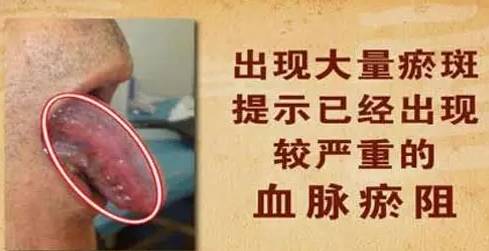
For individuals with cardiovascular diseases, a dark purple tongue or spots on the tongue or lips are often due to impaired blood circulation, indicating blood stasis and a decrease in oxygen levels in the blood. In TCM, this is classified as blood stasis.
If there are spots on the tongue accompanied by symptoms such as palpitations, shortness of breath, insomnia with vivid dreams, or stabbing pain in the precordial area, it may indicate cardiovascular disease.
If accompanied by dizziness and headaches, it may suggest cerebrovascular disease.
Additionally, individuals with blood stasis may experience various symptoms, such as dysmenorrhea, blood clots in menstrual flow, unexplained bruising, poor pain tolerance, and a dull complexion.
2. Red Tongue: Insufficient Heart Yin
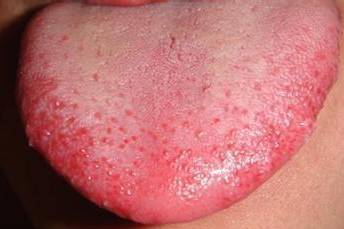
A healthy tongue should appear light pink. Clinically, some patients with cardiovascular diseases may present with a red tongue, often accompanied by symptoms such as irritability, palpitations, premature beats, and tachycardia.
This condition is classified in TCM as insufficient heart yin. When heart yin is deficient, it is prone to generating false heat, which can trigger cardiovascular diseases.
3. White Coating on the Tongue: Insufficient Qi and Blood
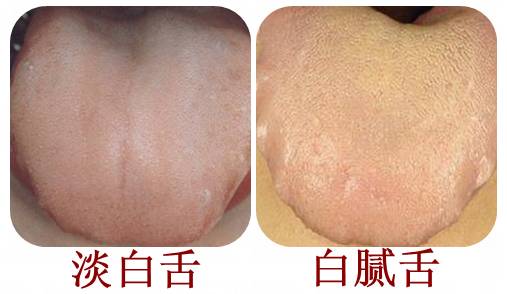
A white coating on the tongue can be categorized into two types:
The first type is a pale white tongue body; if this type is accompanied by arrhythmia, fatigue, and heart failure, it may indicate an anemic heart condition.
The second type is a thick white coating, often related to dampness obstructing the middle jiao, with patients frequently experiencing chest tightness and discomfort in the precordial area, possibly indicating coronary heart disease or arteriosclerosis.
The “Emperor” Point on the Foot: Opening this point can help the heart and blood vessels
For individuals with heart issues, regularly massaging the Gong Sun (Pericardium 8) point can help alleviate heart discomfort.
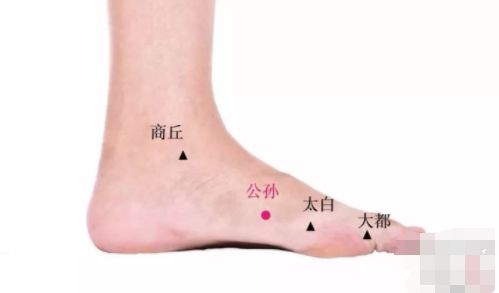
Gong Sun Point
The Gong Sun (Pericardium 8) point, mentioned in the “Ling Shu: Ben Shu”, belongs to the foot Taiyin spleen meridian and is one of the eight extraordinary points, connecting to the Chong meridian.
The Gong Sun point (the Yellow Emperor Xuanyuan was once surnamed “Gong Sun” before changing to the Ji surname) can command all directions like an emperor. Thus, by massaging this point, one can influence the entire body, alleviating fatigue and regulating the five organs.
For those with heart issues, regularly massaging the Gong Sun point can enhance spleen function and blood production, regulate the balance of Qi and blood, and nourish the heart, leading to a calm heart and spirit.
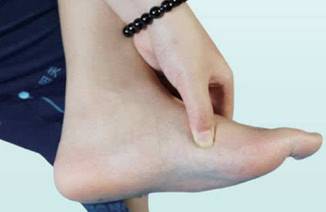
[Location] The point is located at the inner side of the first metatarsophalangeal joint (the joint between the big toe and the foot), where a bow-shaped bone (the arch of the foot) can be felt. At the back end of this arch, there is a depression that can be pressed, producing a sensation of soreness and distension.
[Method] Use the pads of both thumbs to press the Gong Sun point, applying moderate pressure. Each massage session should last five minutes, performed twice daily.
There is a “Rescue Heart Pill” on the Hand: Useful for daily health care and emergencies
Da Yu Ji (Thenar Eminence)
The Da Yu Ji is a reflex zone for the heart. Regularly pressing it for 10-20 minutes is akin to giving the heart a massage!
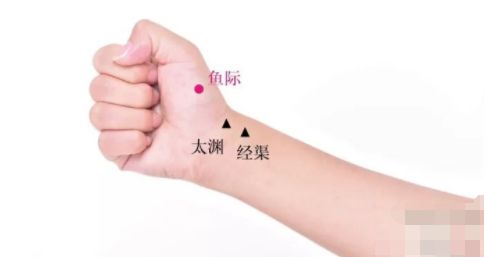
This has a heart-protecting effect, relieving heart pressure. In emergencies, strong stimulation can act as a direct heart massage, providing a valuable time advantage before reaching the hospital for treatment.
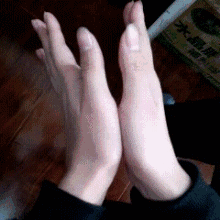
[Location] The point is located at the base of the thumb on the palm, extending down to the wrist, where it is prominently raised when the hand is opened.
[Method] For emergency rescue: apply strong pressure, alternating hands to rub.
[Daily Heart Care] Spend fifteen minutes daily pressing with the thumb until there is no soreness or distension.

